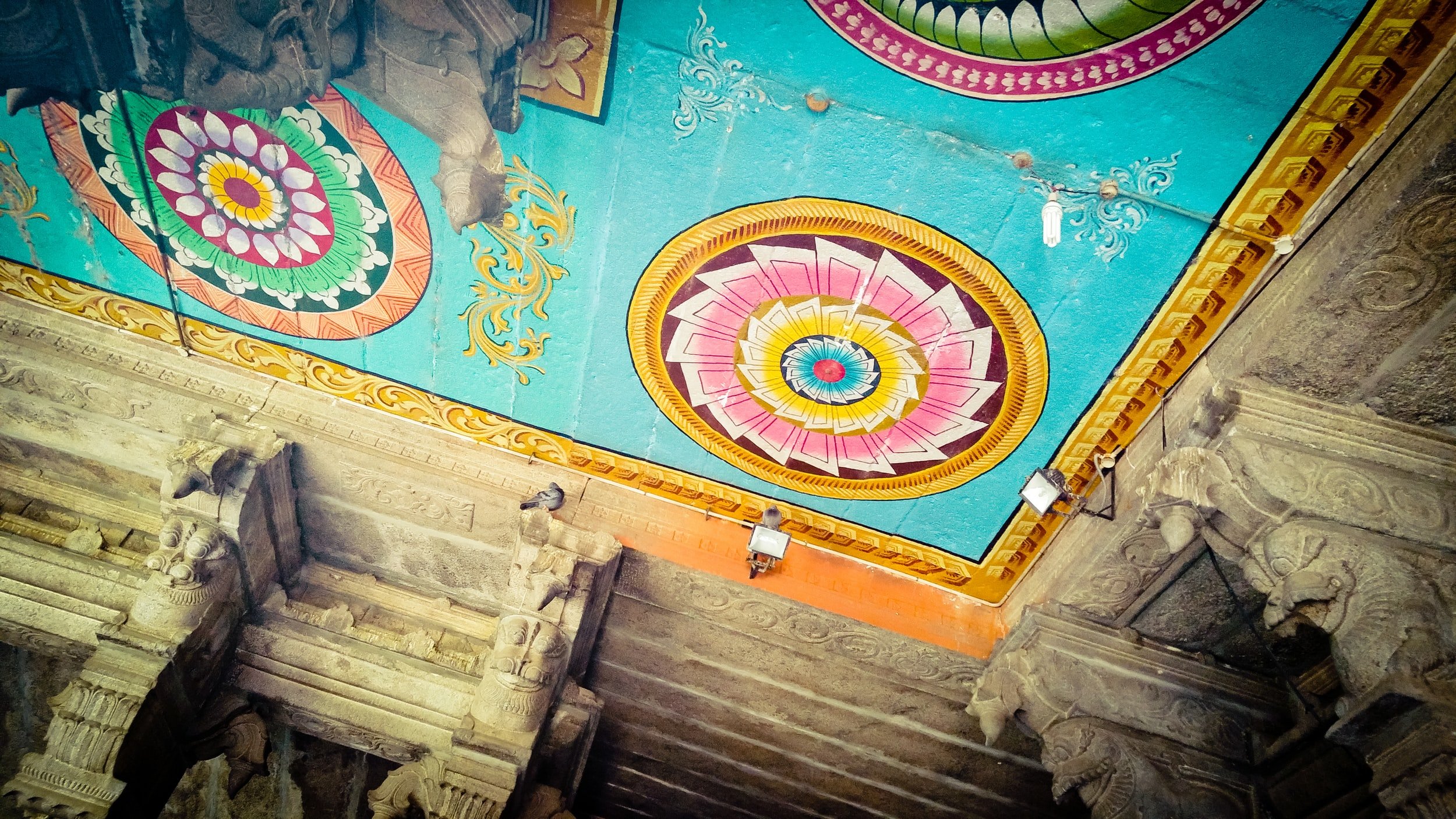Yantra Meditation – Everything you need to know
What is Yantra?
Yantra is a Sanskrit word which means instrument. Yantra in meditation are sacred geometric images used to gaze upon to improve concentration. These geometric images are mostly composed of triangles, circles, squares or even the shape of lotus leaves to represent the energy of the deity whom we chose.
Did you read — April 2022 Astrological Forecast ?
History of Yantra
Many traditions follow some sort of visual framework to stay focused.
Thangkas from Tibetan Buddhism
Classical Christian icons
Painting of chakras
Hindu deities
Candles etc.
Yantra is one of the aspects of Tantra and works as a substitute for the image or statue of a deity. Different Yantras contain specific mantras along with the subtle energy body and the vibration of the god/goddess expressing their sense of spirit and energy.
The yantras emanate from a single point called ‘Bindu’. It has several geometric shapes radiating concentrically from the center, including triangles, circles, hexagons, octagons, and symbolic lotus petals.
Circles appear in nature – in flowers, snowflakes, sun, moon, etc., architecture and are also powerful symbols in cultures throughout world history. Circles are called Mandalas in Sanskrit. In various spiritual traditions, mandalas are used for evoking spiritual energy, facilitate meditation and are used in sacred rites as a transformative tool to assist with healing. This healing process using the power of circles or Mandalas or circles is called Mandala Therapy.
Triangle
Hindu yantras include triangles. Downward pointing triangles represent feminine aspect of God or Shakti, upward pointing triangles represent masculine aspect such as Shiva.
Hexagram
These are two equilateral triangles intertwined, representing the union of male and female aspects of divinity, or Shiva and Shakti.
Lotus
Lotus petals represent purity and transcendence. Eight-petaled lotuses are common, but lotuses in yantras can include 2, 4, 8, 10, 12, 16, 24, 32, 100, 1000 or more petals.
Circle or Mandalas
Unlike other shapes, the circle flows and has no hard edges or angles. Circles are believed to help individuals focus inward
Outer square
They represent the earth and the four cardinal directions. Often, they include sacred doorways on each side of the square.
Pentagram
Guhyakali have a pentagram, due to the number five being associated with Kali.
Octagon
They represent eight directions
Sri Yantra - Sri Yantra is the most powerful and celebrated of all tantric yantras. It is a representation of cosmic creation.
How is Sri Yantra formed?
Check out the picture above. Sri Yantra is formed by the following
three steps Bhupura which represents Manas, Ahangara, Budhi and Chitta.
three radius circles representing the trinity, cycles of time and states of consciousness)
a circle of petaled lotus’s two interlocking sets of triangles (four facing upward representing the male aspect and five facing downward representing the female aspect)
Bindu in the center triangle where Tripura Sundari (Goddess of bliss, delight, total fulfillment) resides and where the merging is experienced between the masculine and feminine.
Everything radiates outside from the center point.
Benefits of Yantras –
They are tools to enhance our life in different dimensions.
Improves your concentration
Helps you to stay focused
Yantras in Ayurveda
The following observations were presented at the International Workshop on mantras and ritual diagrams in Hinduism, held in Paris, 21-22 June 1984.
The study of the psychophysiological effect of mantric recitation, principally in yogic exercises, contributes to the understanding of the essentially psychosomatic use of sacred formulas and ritual diagrams in Ayurvedic medicine. These mantras, or instruments of thought, are applicable to the total man, in both his psychophysical and spiritual dimensions. The practice of this procedure is as much auditory and visual as it is gestual (mudrai) and graphic or figurative (yantra, mandala).
Orientalists have not failed to draw a connection between the device of manra-yantra and psychological introspection, observing as they have the efficacy of this Indian practice for the reintegration of personality. Scientists have also undertaken physiological investigations of the poorly understood potentialities of japa.
Classical Ayurveda introduces only a few examples of amulets for the newborn child or against the evil spirits that affect infants with disease. Vagbhata, in the Astangasamgraha, gives a description of two mandalas of the latter sort. It is not until the 16th century that we find another mandala, which the compiler of the Ayurvedic section of the Todarananda, an encyclopedia borrowed, along with certain mantras, from the alchemical Rasarnava. The earlier Haritasamhita contains a ritual diagram for easy childbirth; another eutocic yantra is described by Vrnda in the 9th or 10th century and later by other compilers of more recent times. This latter diagram represents a magic square, of the order three, which is also found in the Arabic medical literature as early as A. D. 850 (Paradise of Wisdom).
Working with Yantras will help you achieve more power to reflect your inner energy. Connect deeper to your goddess energy by implementing Yantra meditation to practice.


